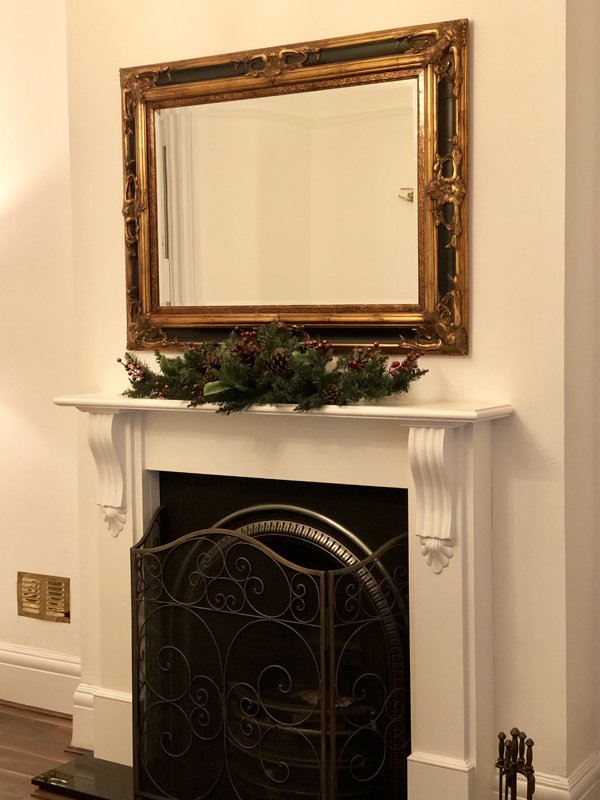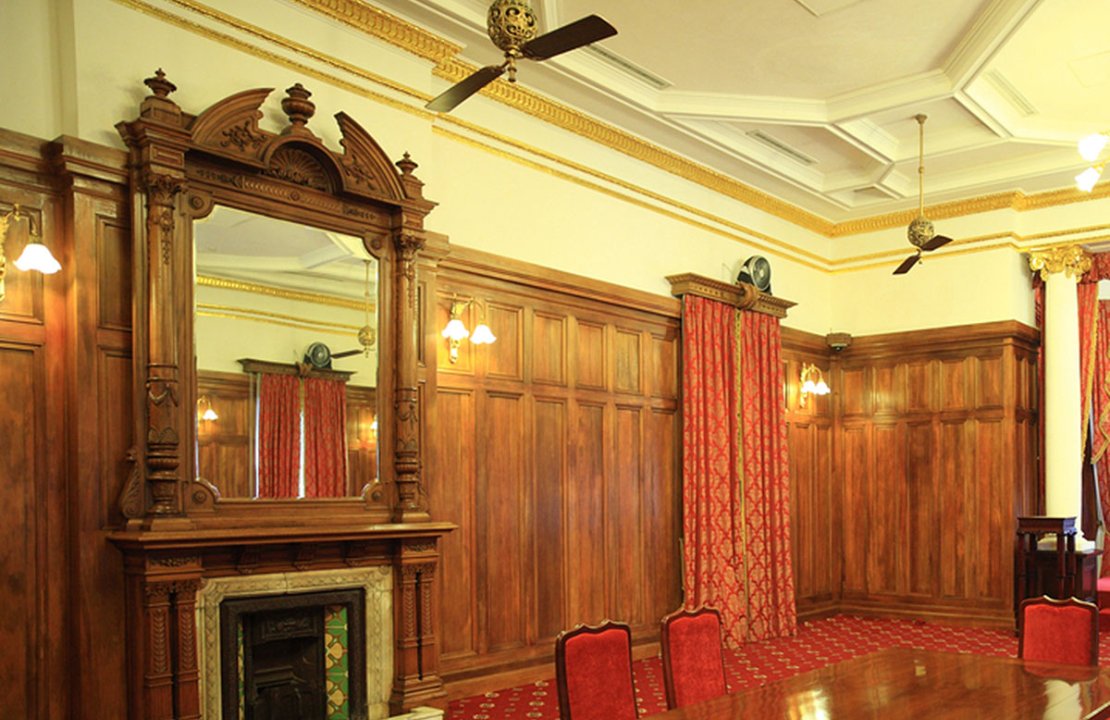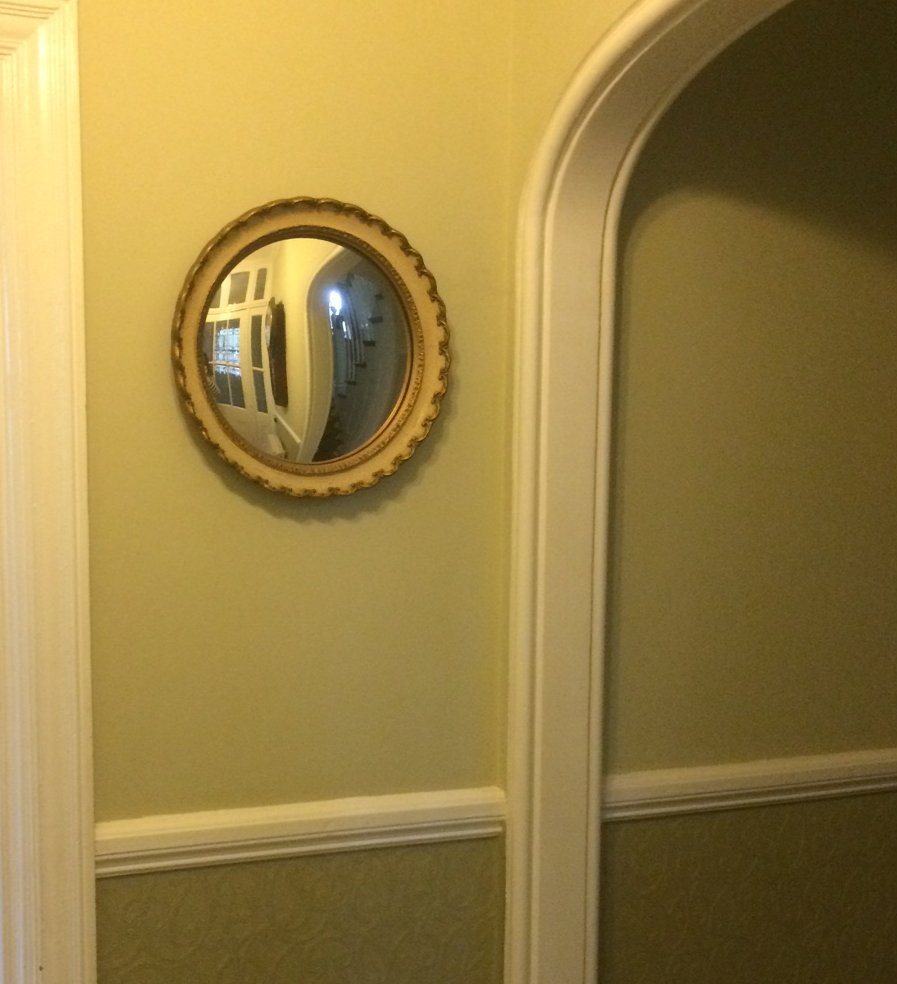In the reception room of a period house, the obvious thing to have above the mantlepiece is a nicely framed picture or an ornate Victorian style mirror. A mirror is a more traditional and appropriate choice because during the long winter months, a mirror can help to increase the scant amount of daylight that comes into the room and make the most of any lighting on in the dining room in the afternoons and evenings.
What is the function of a dining room mirror?
Unlike in other rooms such as a hallway or bathroom, in a dining room, if a Victorian style mirror is used, this tends to be for decorative purposes rather than functional. In a period house, dining room mirror decorating ideas tend to consist of large beveled mirrors with ornate gold frames. Usually in a dining room the use of a mirror is confined to being hung over the mantelpiece. At this height it would prove difficult to use for the purposes of seeing ones reflection apart from for the tallest of people. A mantle mirror benefits the room by reflecting natural and artificial light and making the most of this light, making the room seem lighter and brighter than it might otherwise be. A mirror can also help a small room appear larger because everything is reflected in it giving the illusion of a double sized room.

What’s the best height to hang a dining room mirror?
This will depend on the purposes of the mirror. If it is simply to reflect light, it’s best hung fairly high. If it is for the purpose of making the room appear larger, it’s best hung in the upper middle part of the wall. Divide your wall height in half, and make sure the mirror is hung above the centre line, at a height that you think suits the room. Get somebody to hold the mirror against the wall at what you think is the appropriate height and then stand back and look at the mirror positioned at various different heights in order to choose the correct height.
Specially designed overmantle mirrors tend to be the most usual mirrors chosen to hang over the fireplace. These mirrors usually have a flat bottom and curved top although there are some attractive designs with decorative bottoms too. With these mirrors it’s all about light reflection and beautiful designs to enhance the general décor of the room.
How to hang a mirror
How you hang a mirror will be determined by the composition of your walls and the weight and size of your mirror. If you are hanging a large heavy mirror, you need to ensure that your fixings are adequate. Stud walls are not suitable for holding any but the smallest and lightest of mirrors, so it’s best you chose brick walls for hanging your mirrors. Although some people do hang mirrors off stud walls, this is not ideal and should only be done if the fixings are attached to the stud part (the wooden internal structure) and not just to the plasterboard.
As a broad guide, you’ll need to follow these rules to hang your mirror:
- Always try to hang a mirror off a brick/structural wall
- If you do wish to hang a lighter mirror off a stud wall, only do this if you find a stud (wooden structural part) in which to drill your holes and place your fixings
- Use appropriate fixings for your wall and weight of mirror ie raw plugs and screws that will more than hold the weight of the mirror
- Test the strength of your fixings before hanging your mirror.
Other mirrors
The ideal locations to hang mirrors so be able to examine or check your reflection are those popular locations: the hall and the bathroom/cloakroom.
A Victorian mirror hung in the hall near the front door with it’s centre at around 160-180cm (dependant on the height of the occupants of the house) is ideal for checking you don’t have any watercress stuck in your teeth or smudged lipstick around your mouth on your way out of the house. The Victorians loved using convex mirrors for this purpose and there are lots of these available in antique shops and also great reproductions are made.
And of course bathroom mirrors come in all sorts of shapes, sizes and functions such as shaving mirrors and mirrors over bathroom sinks, or lining entire bathroom walls for proper examination of your reflection in all it’s glory.
The Victorian Emporium sells a wide selection of overmantel mirrors, bathroom mirrors and hallway mirrors with frames in a wide choice of colours such as antiqued gold, black and ivory.


Be the first to add a comment...